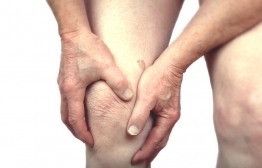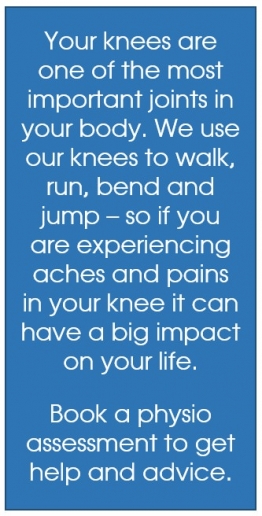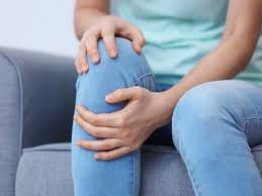What is it?
Your knee is like a hinge. Cartillage covers the end of the bones to allow smooth movement when you bend or straighten it.
Osteoarthritis is when the cartillage is graually worn away with age or after injury, mainly at the points of greatest pressure. The two surfaces rub against each other - sometimes you can hear of feel it. This can lead to pain, stiffness, loss of movment, swelling and deformity.
It can lead to your knees giving way because the msucles around the joint can become weak.
Dealing with Knee Pain
In the case of osteoarthritis the following tips may help:
Straighten your knees fully when standing and avoid lying down with your knees up. Also, reduce the amount of time that you spend sitting and aim to bend and stretch your legs a few times every half hour and just before you get up.
Wear sensible, well fitting, soft soled shoes with low heels.
Your physiotherapist may give you an exercise programme to reduce knee stiffness and strengthen the muscles which control your knees. Try this daily, starting gently at first.
Osteoarthritis can be managed in several ways:
Heat and ice: Heat can be soothing and help decrease pain, ice can reduce swelling and pain.
Painkillers and/or anti-inflammatory tablets/gels but discuss with your GP or pharmacist before taking.
Avoiding Knee Pain
Exercise regularly to maintain a good level of fitness. This will mean that you are stronger and better able to support your joints, including your knees. If you haven't been active for a while, start gently and gradually increase the intensity.
Spend 5-10 minutes warming up before exercise to increase blood flow to your muscles and reduce the chance of an injury. Many sports professionals advise stretching your muscles after warming up and again after cooling down; however the benefit of stretching before or after exercise is unproven.
Vary your knee movements: Anterior knee pain (pain in the front of your knee) is generally the result of overusing the joint, so it is important to try and vary the sresses you place on your knee. For example, runners should make sure they mix the surface they run on to include uphill runs and flat ground.
Stretch regularly: keep the muscles in your legs as flexible as possible by regular stretching.
Strengthen your leg muscles: Perform regular exercises such as squats and lunges to strengthen and keep your leg muscles in good condition.
Footwear: Ensure sports shoes are appropriate for the activity and are replaced regularly to avoid excessive wear. In osteoarthritis of the knee - good cushioned footwear has also shown to be beneficial.








